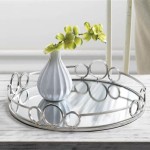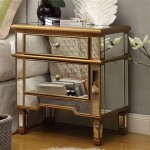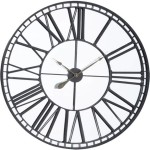Antique Mirror Sheets: A Comprehensive Guide
Antique mirror sheets offer a unique aesthetic, blending the functionality of a standard mirror with the charm and character of aged or vintage surfaces. These sheets are not merely reflective; they are decorative elements that can significantly enhance the visual appeal of interior spaces. They are created through specialized processes that simulate the effects of time, resulting in variations in tone, texture, and reflectivity, mimicking the look of mirrors that have aged naturally over decades.
The appeal of antique mirror sheets lies in their ability to introduce a sense of history and depth to contemporary designs. They can soften harsh modern lines, add interest to minimalist spaces, and provide a focal point in rooms that might otherwise lack personality. Moreover, their inherent imperfections—the subtle spotting, clouding, and variations in silvering—contribute to a unique and bespoke feel that is difficult to replicate with mass-produced materials. This allows for a more individualized and aesthetically rich design outcome.
Unlike standard mirrors, which are designed for uniform reflection, antique mirror sheets prioritize visual interest and decorative effect. The process of creating these sheets involves controlled etching, distressing, and silvering techniques that deliberately alter the reflective surface. This results in a surface that is not perfectly clear or consistent, but rather possesses a distinctive patina that distinguishes it from ordinary mirror glass.
Understanding the Manufacturing Process
The production of antique mirror sheets is a complex and multi-stage process requiring specialized equipment and expertise. The initial step typically involves selecting a high-quality glass substrate, which serves as the base for the mirroring process. The type of glass used can influence the final appearance, with options ranging from clear glass to low-iron glass, the latter offering greater clarity and reduced green tint. This is especially important for subtle color variations that the antique finish brings out.
The next stage entails applying a silvering solution to the back of the glass. This solution, traditionally composed of silver nitrate, is carefully applied to create the reflective layer. The uniformity and thickness of this layer are crucial to the overall quality of the mirror. Precise control over the application process is necessary to achieve a consistent and even reflection, despite the eventual antique treatment.
Following the silvering, a protective layer, typically consisting of copper and a final paint coating, is applied to shield the silver layer from scratches, corrosion, and other environmental factors. This protective layer is critical to the longevity of the mirror, preventing the silver from oxidizing or deteriorating over time. The materials chosen for this layer must be compatible with the silvering process and capable of withstanding the abrasive treatments that will be applied later to create the antique effect.
The defining stage in the creation of antique mirror sheets is the distressing or antiquing process itself. This involves the controlled application of chemicals, abrasives, or other treatments to selectively remove or alter the silvering layer. The specific techniques used vary depending on the desired aesthetic, with some manufacturers employing etching solutions to create a speckled or mottled effect, while others use mechanical abrasion to simulate the wear and tear of aged mirrors. The artistry of this process lies in creating a convincing and aesthetically pleasing aged appearance without compromising the structural integrity of the mirror.
After the distressing process, the mirror is carefully cleaned and inspected to ensure that the desired effect has been achieved. The edges are often polished or beveled to provide a finished and refined appearance. Finally, the mirror is typically coated with a sealant or protective layer to further prevent oxidation and enhance its durability. The entire process is carefully monitored to ensure that each sheet meets the required quality standards.
Applications of Antique Mirror Sheets in Design
Antique mirror sheets are versatile design elements utilized across diverse applications, from residential to commercial spaces. Their unique aesthetic makes them suitable for creating focal points, adding character, and enhancing the overall ambiance of an environment. They are equally at home in traditional, contemporary, and transitional design schemes.
In residential settings, antique mirror sheets are often used as wall coverings to create a sense of spaciousness and depth. They can be incorporated into living rooms, dining rooms, and bedrooms, adding a touch of elegance and sophistication. They can also be used as decorative panels in furniture, such as cabinets, dressers, and coffee tables. The reflective quality of the mirror, combined with its aged appearance, creates a captivating visual effect that enhances the overall design of the furniture piece.
In commercial spaces, antique mirror sheets are frequently employed to create a more inviting and sophisticated atmosphere. They are commonly used in restaurants, bars, hotels, and retail stores to add a touch of vintage charm or industrial chic. They can be incorporated into backsplashes, accent walls, or even used as decorative panels on bar fronts or display cases. The subtle imperfections and variations in tone present in antique mirror sheets can effectively soften the harshness of modern commercial interiors, creating a more comfortable and welcoming environment.
Beyond their aesthetic appeal, antique mirror sheets also offer practical benefits. Their reflective surface can help to brighten dimly lit spaces and make them appear larger. They can also be used to conceal imperfections or create visual interest in areas that might otherwise be overlooked. Their versatility and ability to complement a wide range of design styles make them a popular choice among interior designers and architects.
Furthermore, antique mirror sheets are often used in bespoke art installations. Their aged appearance lends itself well to creating pieces with a sense of history or mystery. Artists often incorporate them into mixed media works to add texture, depth, and reflectivity. The unique visual qualities of antique mirror sheets make them a valuable tool for creating artwork that is both visually stunning and conceptually engaging.
Considerations When Selecting and Installing Antique Mirror Sheets
Choosing the right kind of antique mirror sheets and installing them correctly are crucial for achieving the desired aesthetic and ensuring the longevity of the installation. Several factors need careful consideration during the selection process, including the type of glass used, the degree of antiquing, the size and shape of the sheets, and the overall design aesthetic of the space.
The type of glass used will affect the overall appearance of the mirror. Clear glass provides a brighter and more vibrant reflection, while low-iron glass offers greater clarity and reduced green tint. The choice will depend on the desired level of clarity and the color palette of the surrounding environment. The degree of antiquing also needs careful consideration. Some antique mirror sheets feature a subtle and delicate aged appearance, while others exhibit more pronounced spotting, clouding, and variations in silvering. The level of antiquing should be chosen to complement the overall design aesthetic of the space.
When it comes to the installation process, professional installation is highly recommended, especially for larger sheets or complex installations. Properly preparing the surface is essential for ensuring a secure and lasting installation. The surface should be clean, dry, and free of any dust, debris, or loose paint. Any imperfections in the surface should be repaired before installing the mirror sheets. Utilizing appropriate adhesives is also crucial. Mirror mastic or specialized mirror adhesives should be used to bond the sheets to the substrate. These adhesives are designed to provide a strong and durable bond without damaging the silvering layer on the back of the mirror.
Cutting and shaping antique mirror sheets requires specialized tools and techniques. It is generally best to have the sheets cut to the desired size and shape by a professional glass fabricator. Accurate measurements are essential to ensure a seamless and professional-looking installation. Furthermore, consider the lighting in the space when positioning antique mirror sheets. The reflective surface of the mirror can amplify light and create interesting visual effects. Experiment with different lighting options to achieve the desired ambiance.
Finally, maintaining antique mirror sheets requires gentle cleaning and care. Avoid using harsh chemicals or abrasive cleaners, as these can damage the silvering layer and alter the appearance of the mirror. A soft cloth and a mild glass cleaner are typically sufficient for cleaning antique mirror sheets. Regular cleaning and maintenance will help to preserve the beauty and longevity of the installation.

Antique Mirror Sheets

Antique Mirror Glass Sheet Multifunctional Decoration Full Bathroom Wall China Made In Com

Antique Mirror Tiles 6 Pack

Antiqued Mirror Panels Antique Tiles Tmp 16 Aldgate Home Ltd

Antique Mirrored Wallpaper Mad About The House

Mirror The Right Way To Use Mirrors In Your Home Bathroom Design Luxury Elegant Interior

Sample Piece Antique Mirror Glass Aged Distressed Foxed Tiles

Custom Size Mirrors Antique Decorative Main Gate Designs Mirror Sheet China Tiles Glass Tile Antiuqed Made In Com

Antique Mirror Tiles Backsplash Müller Designs

Merola Tile Re Beveled Antique Mirror 3 In X 6 Glass Wall 10 4 Sq Ft Case Wsdlsbam The Home Depot








